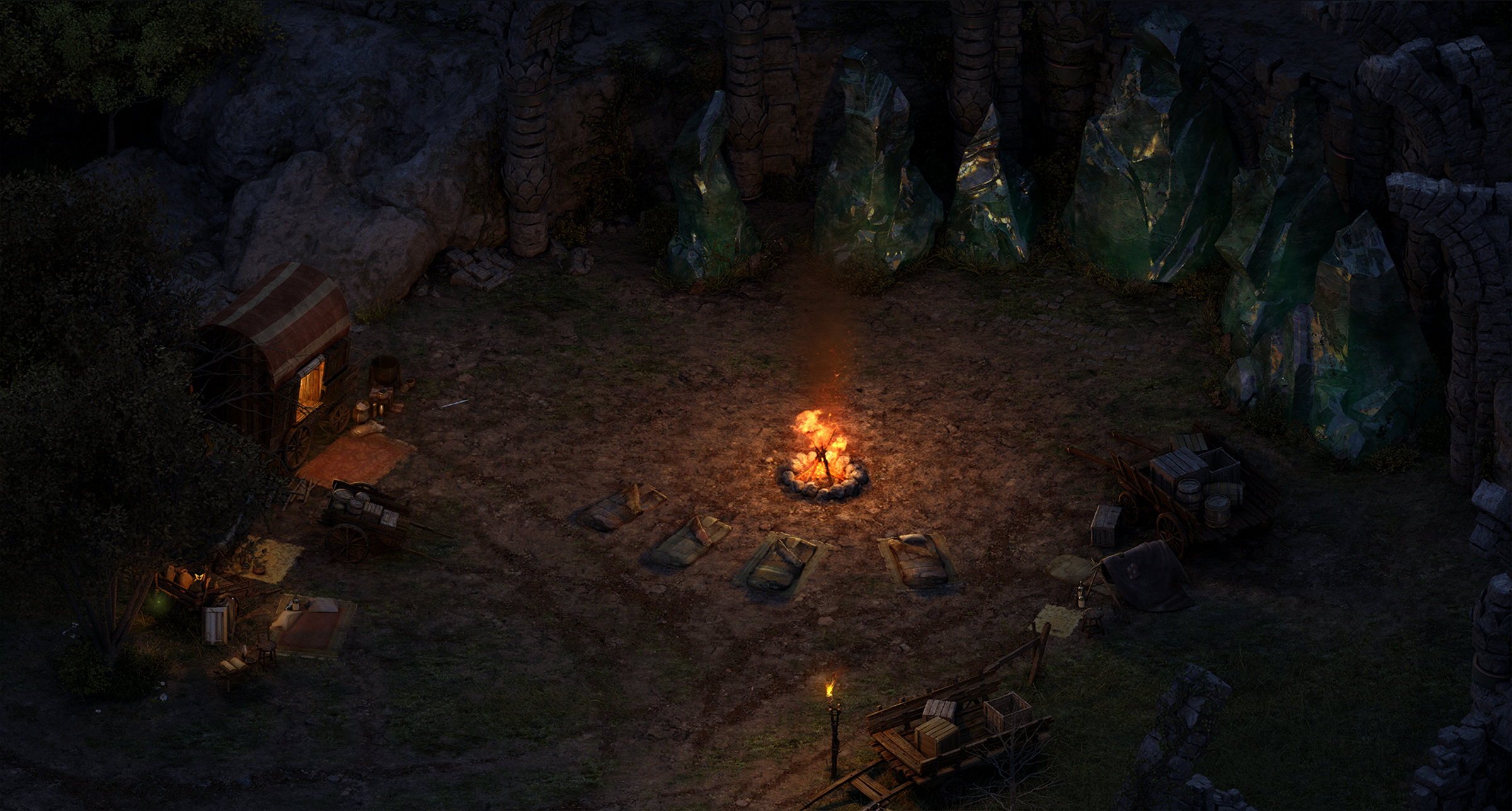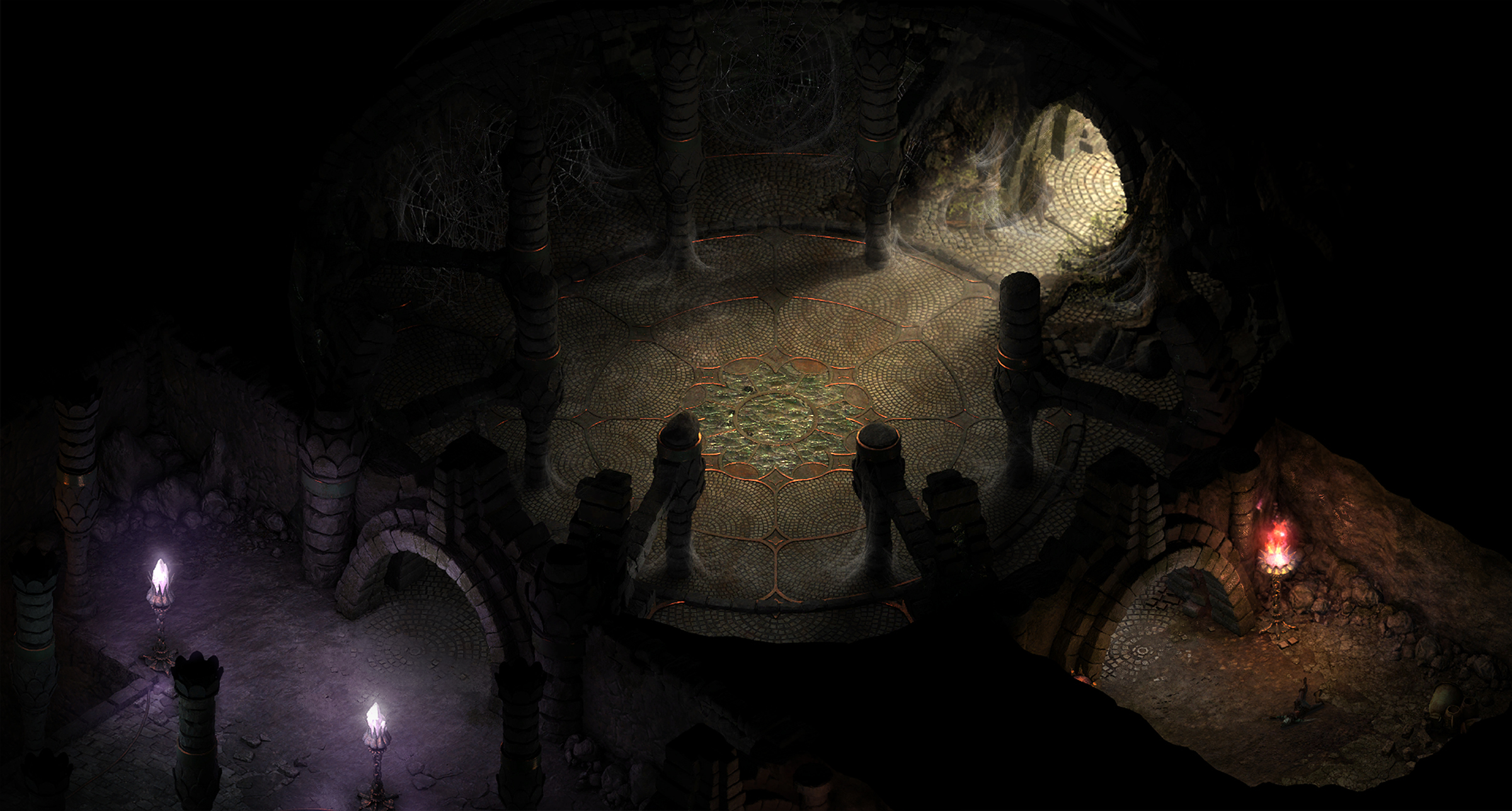Pillars of Eternity: An RPG With an Unprecendented Amount of Choices
/For the following preview to make sense, I’m going to need to tell you a story.
There once was a time, back in my young days, where the whole adult gamer phenomenon was still wrapped in a mystical shroud of some kind. Where giant beasts wandered into a realm reserved for us small younglings. They didn’t just play our games, but also these complex, adult-looking games on the nearby PCs. I remember glancing over at computers during collectable card game tournaments, wondering what these games were like, and why they were so befuddling to behold.
I got my answer years later, when I stumbled into Paradox Interactive’s E3 booth, discovering Obsidian Entertainment’s Kickstarted game Pillars of Eternity. As developer Josh Sawyer began the demo, my mind flashed back to those old PC stations, and when the phrase "Infinity Engine" was invoked, an old mystery was long solved, and a new world opened to me as an adult RPG gamer.
Pillars of Eternity is a role playing game crafted in the memory of the old Infinity Engine titles. These were 2-D, isometric RPGs based on the mechanics of Dungeons and Dragons, used by BioWare for Baldur’s Gate and by Black Isle Studios for games like Planescape Torment. Sawyer, a veteran of Black Isle, told us about how they wanted to recreate the experience of the Infinity Engine games while eliminating some of the more frustrating elements. That meant the game’s first promise would be two critical elements to the series’ roots: a huge breadth of character customization and a massive story anchored around a wide array of choices and consequences.
Both factors might seem like features promised by almost any RPG, but Sawyer was quick to show us how much this meant in the Infinity Engine subgenre. In Pillars of Eternity, you’ll be picking from one of six races and eleven classes, to dive into scenarios where you may have as many as six or more choices depending on your inventory class, gender, and dozens of other factors.
Our developer-led demo took us to a location called The Dyrwood, where the player was part of a caravan venturing near some ancient ruins. After sickness befalls our hero, the caravan leader ordered the player to venture into the woods to seek herbs they can use to cure their own ailment. Here, Sawyer showed off the extensive dialogue trees built into the game, and how the player can build their background in conversation with the caravan guard after character creation, making it fit into the flow the game. He told me later about his desire to use this older genre to reinvigorate similar RPG conventions.
“One thing we knew we did not want to do is...to have markers like a compass with an arrow showing you where the next step with a quest was. It means though that we have to write our journal entries very informatively. We have to tell the player "this is what you’re supposed to do." But the player has to find their own way there and use their eyes and think about what they were told to do and figure things out.”
As the two player-controlled characters enter combat, Sawyer points out that both these wizard and rogue classes have been updated from classic Infinity Engine games to give more agency to the player, with wizards gaining more general attack functions outside of spells, and rogues being no longer restricted to simply skill classes only good for picking locks and sneaking around.
Things go south for our heroes, as they return to find their caravan trashed and their friends mostly killed by cultists seeking to protect the nearby ruins. In the dialogue trees surrounding these events, we saw both the player’s inventory and their diplomacy stats come into play while trying to save one party member’s life, along with a host of other unexplored options during our demo. Sawyer was quick to explain that there’s a lot of content players will probably miss thanks to these trees.
“We at Obsidian, and back at Black Isle, we always emphasized choice and consequence, and if you can still get everything, that’s not much of a consequence, we also know that a lot of our players love to replay our games over and over again, so for us the player not being able to access every single thing is not a bad thing. They will access things that other people won’t find."
So in this case, if our her didn't have the proper inventory, or just decided to abandon their new rogue friend, they’d be down a companion who could follow them on their entire journey. And this was barely five minutes into the game.
Of course, with this big new fantasy world supposedly meant to replace that of Dungeons and Dragons, what will the story be focusing on? Sawyer explained how they wanted to shake up some of the old narrative formulas with this game both in setting and in character design.
“We wanted to move it a little further forward in history than is common, so our period is set more like 16th century,” he explained. “So we have things like firearms, more like deep sea travel and things like that, the bigger issue really is that it’s kind of a Renaissance setting, due to the magic of Animancy, which is soul magic, and that’s a big element of the game, exploring what Animancy is and what it means to these people. People take reincarnation for granted. And they believe their personalities -- flaws, defects, and aspects of their personality -- come from their soul ,and their soul sort of is reincarnated into them.
“Another big thing for me is the way we approach our races and cultures. As opposed to the idea of saying ‘this is the dwarf kingdom’ and ‘the elf kingdom' and 'the human kingdom' or whatever, races, part of it is because it’s more colonial, races are a little more commingled, and people associate with their home culture more than their race. For example, the Edimere empire, the people that live in the Dyrwood, are colonists, they’re elves and humans that dominate that empire, and they’re very similar in their cultural leanings and their stylings. When those elves come into the elves of [other factions] they look identical but culturally they are very very different.”
In a year where gender and race conversations seemed louder than ever, Sawyer seemed excited to share the spread of characters he was working on. "We have your typical sort of white guy elves, but one of the characters I’m writing is this character Palagina, and Palagina is a Valian, but she’s what’s called a godlike, and in this world a Godlike is the sort of people who have a blessing or a curse of the gods, so they have a strange appearance to them. Palagina is a dark skinned black woman from the Valian Republics, but she’s got an Avian Godlike, so she has golden bird eyes, and feathers growing out of her hair and things like that.”
“In regards to playable characters, I think it’s perfectly 50/50 male female, with a big mix of different races.”
Our demo closed with the players discovering the origins of something called a soul storm -- a power force that can rip people’s souls from their bodies, a great danger in this world that takes resurrection for granted. And just as I was discovering the depths of a section of the genre I’d only just learned about, so too did Sawyer close out our demo with promises about the depths of their game and how vast the possibilities are for the experience.
“You can get characters killed, you can go through the game all by yourself, you can build your own party members using the adventurer's hall, and you can get a character up to one level below your current level. They obviously won’t have the story or the dialogue of that character, but they will be your character to build.”
Obsidian plans to launch Pillars of Eternity in winter 2014, and after Kickstarting the game with almost 74,000 backers, it looks like the Infinity Engine subgenre of RPG looks to be making a revival along with the Torment: Tides of Numeria campaign. So after all these years, I begin to understand why these games drew people to the terminal at Wizards of the Coast, and why they might yet again soon.




